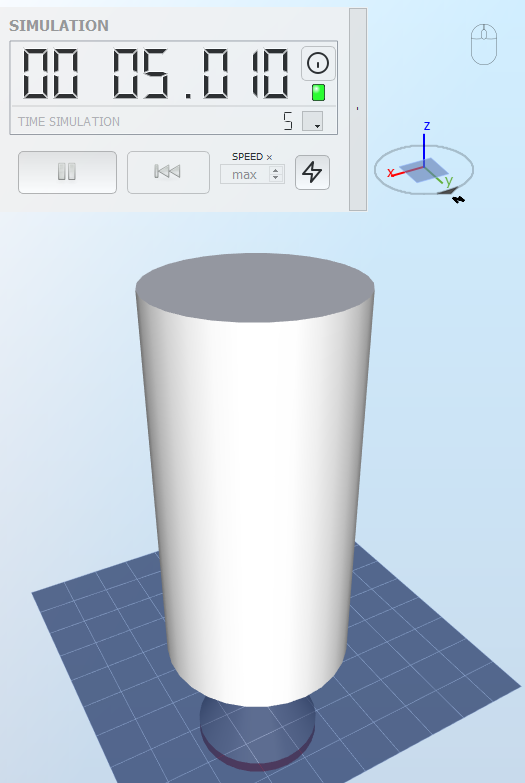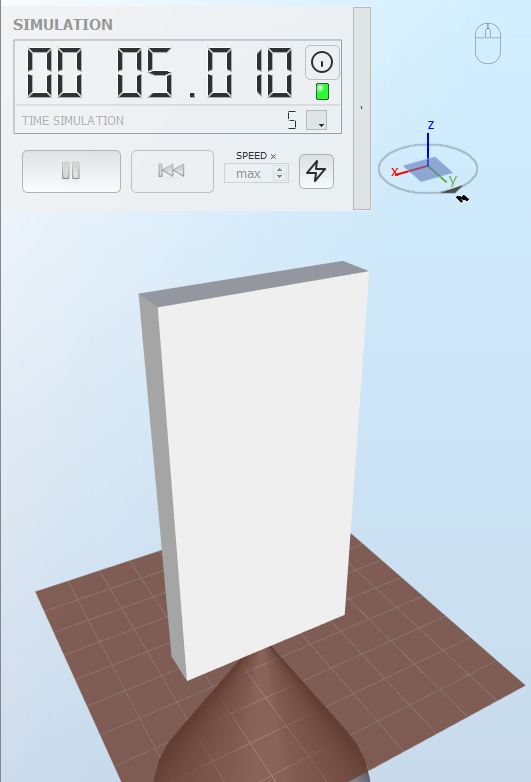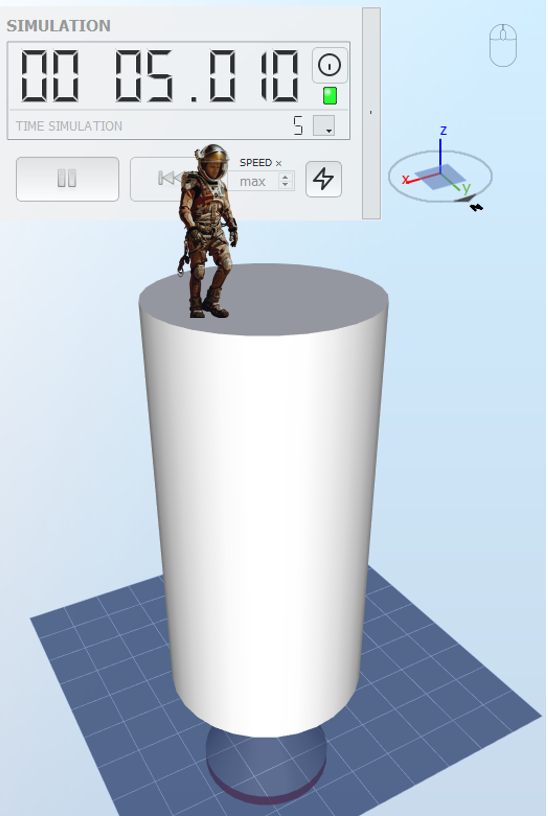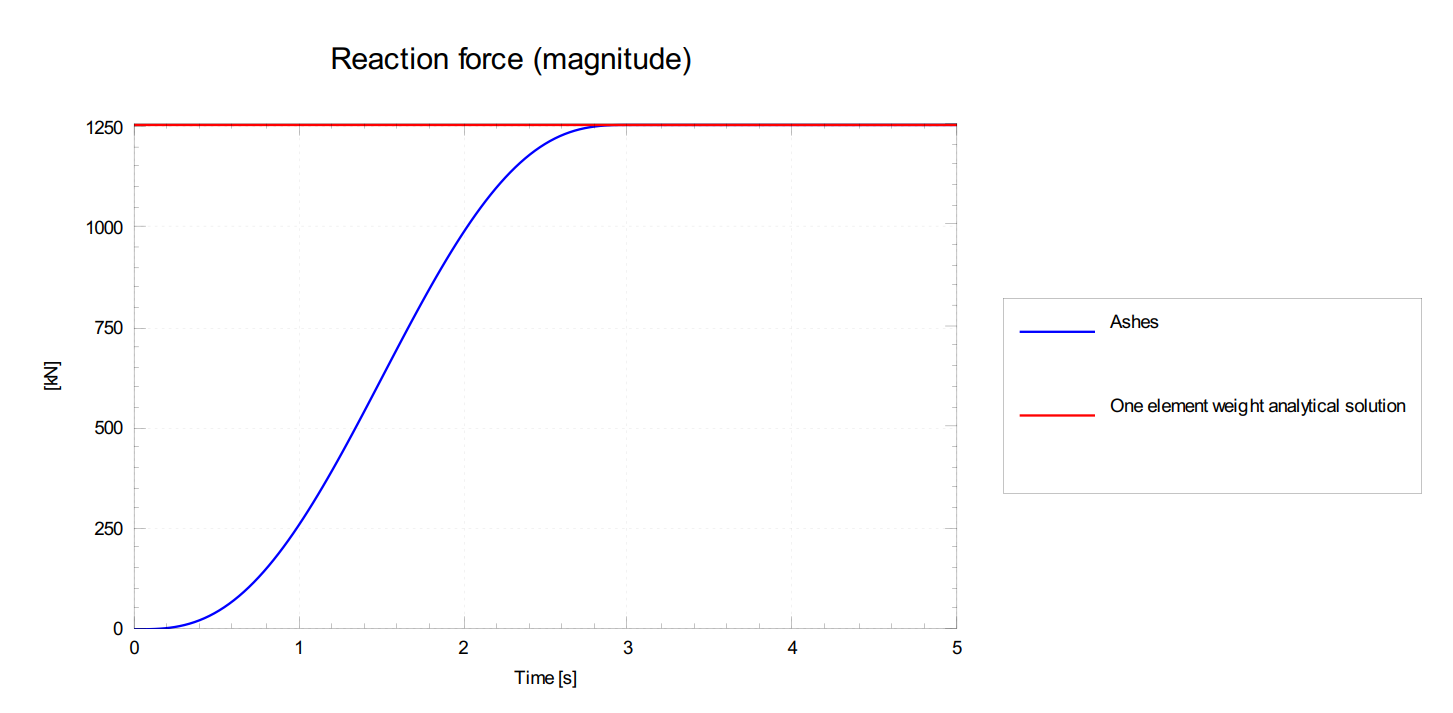Element weight
1 Test description
This test uses a
one element model
to compute the reaction force at the support at the bottom of the model. No other loads than gravity are applied, so the reaction force of the support node should be the same as the weight of the element.
Note that when computing the reaction force of an element, Ashes omits the bottom half of the element connected to the support.
We use the output
Reaction force magnitude
from the
Support sensor
.
The following load cases are tested:
- Circular hollow
-
Circular shape
- Circular shape thickness
- Circular shape thickness filling
- Circular shape thickness filling half
-
Circular solid
-
Rectangular hollow
-
Rectangular shape
- Circular hollow Mars
2 Analytical solution
In this section we compute the weigth of each model. When computing the reaction force, Ashes omits the lower half of the element connected to the support, so only half of the weight of each model should be compared to the output from Ashes.
2.1 Circular hollow cross section
The model is shown in the figure below:

Note
: circular hollow cross sections appear filled, but this only affects the visualization.
The radius is
$$r = 2.5$$
m, the thickness is
$$t=0.2$$
m, so the structural area is
$$A=\pi r^2 - \pi(r-t)^2 = 3.0158 m^2$$
The length of the element is
$$l = 10$$
m and the material density is
$$d=8500 kg\cdot m^3$$
, so the mass of the element is
$$m = A\cdot l\cdot d = 256 346$$
kg.
The acceleration due to gravity is
$$g = 9.80665 \text{ m}\cdot \text{s}^{-2}$$
, so the weight is
$$W = 2513$$
kN.
The analytical value to compare to the output is
$$W/2 = 1257$$
kN.
2.2 Circular chape cross section
The model is shown in the figure below:

The input linear mass is
$$m_l = 25000 kg/m^3$$
and the length of the element is
$$l=10 m$$
, so the mass of the element is
$$m = 250000$$
kg.
This gives a weigth of
$$W = g\cdot m = 2452\text{ kN}$$
.
The analytical value to compare to the output is
2.3
Circular shape thickness

The dimensions are the same as in the
Circular hollow
case, except that the cross section is now solid (i.e. filled).
$$W/2 = 1226 \text{ kN}$$
2.3
Circular shape thickness
This model is similar to the previous one, but the cross section now has a thickness
$$t = 0.03\text{ m}$$
and the input linear mass is
$$m_l = 4000\text{ kg}\cdot\text{m}^{-1}$$
. The mass of the element is thus
$$m=m_l\cdot l=40000\text{ kg}$$
and the half weight is
$$W/2 = mg/2=196\text{ kN}$$
Note:
the thickness is not used to compute the structural mass of the element. The structural mass of the element is solely based on the linear mass input by the user. The thickness is used to compute the mass of the filling (if any), see load case
2.4 Circular shape thickness filling
This model is similar to the previous one, but the element is now filled with sea water with a density of
$$d_w = 1026.9\text{kg}\cdot{m}^{-3}$$
. As in the previous case, the mass of the structural part of the element is
$$m=40000\text{ kg}$$
.
The mass of the water in the element is
The total half weight of the element (including filling) is then
$$m_w = \pi\cdot(r-t)^2\cdot l\cdot d_w=197\cdot10^3\text{ kg}$$
The total half weight of the element (including filling) is then
$$W/2=(m+m_w)g/2=1161\text{ kN}$$
2.5 Circular shape thickness filling half
This model is similar to the previous one, but only half of the length of the element is filled with water now.
The total half weight of the element (including filling) is then
$$W/2 = (m+0.5m_w)g/2=679\text{ kN}$$
2.6 Circular solid cross section
The model is shown in the figure below:

This gives a half-weight of
$$W/2 = 8183\text{ kN}$$
2.7 Rectangular hollow cross section
The model is shown in the figure below:

The rectangular hollow cross section has a height
$$a = 5\text{ m}$$
and a width
$$b = 1\text{ m}$$
. All other input are the same as for the
Circular hollow
cross section. This gives a structural area
$$A = a\cdot b-(a-2t)\cdot(b-2t) = 2.24\text{ m}^2$$
.
This gives a half-weight of
$$W/2 = 934\text{ kN}$$
2.8 Rectangular shape cross section
The model is shown in the figure below:

The input are the same as in case 2, therefore the output to compare to is
$$W/2 = 1226\text{ kN}$$
2.9 Circular hollow cross section on Mars
The model is shown in the figure below:

The characteristics of the model are the same as in the
Circular hollow
case, so the mass of the model is
The acceleration due to gravity on Mars is
$$m = 256346\text{ kg}$$
$$g_M = 3.72076\text{ m}\cdot\text{s}^{-2}$$
and the mass of Matt Damon is neglected, so the half-weight of the element is
$$W/2 = 477\text{ kN}$$
.
3 Results from the regression test
A test is considered passed if the results produced by Ashes are within 0.01% of the analytical solution.
The report for this test can be found on the following link:
In Ashes, the loads are applied with a ramp-up, i.e. they start at 0 and tere value is progressively increased until their value (see
Analysis
). Therefore, the output produced by Ashes will show a ramp-up period as well.
A passed test will therefore show a red horizontal line for the analytical results and a blue smoothly increasing curve for the results produced by Ashes, such as the one shown in the figure below:

A passed test will therefore show a red horizontal line for the analytical results and a blue smoothly increasing curve for the results produced by Ashes, such as the one shown in the figure below:
